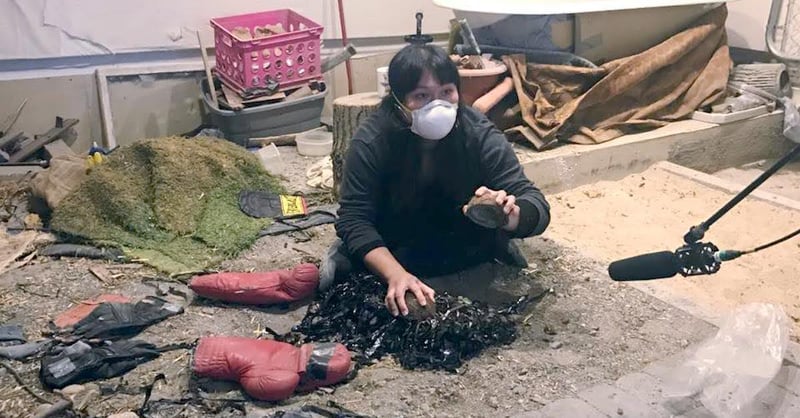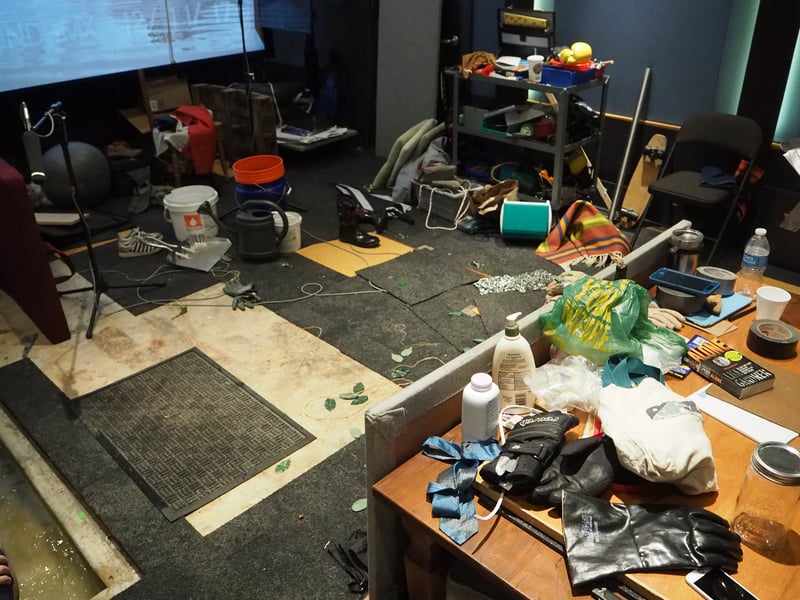Learn the basics of Foley and how it fits into the audio post production process.
Foley is one of the most common yet misunderstood categories of sound effects. To most people outside the industry, Foley simply means “the cool sounds they record for the movies.” While that’s technically true, it’s also an oversimplification. The art of Foley has been around for nearly a century, and over time it has evolved and changed along with the entertainment industry itself.
Today, the term has a dual meaning. Traditionally, it refers to the act of performing and recording sound effects such as footsteps and movement sounds in sync with moving images. But it also refers to a distinct category of sound effects broadly defined as any sound made by a character or something they touch (for example, a car door opening would count, but not the engine). To make things even more complicated, Foley is often blended with sound design, blurring the lines between the two art forms.
Foley is the “glue” that holds film soundtracks together, makes animation feel real, and takes gameplay to a new level of immersion. In short, the job of Foley is to help us suspend our disbelief, but there’s much more to it than that. To understand this complex topic, we’ll start with the origins of Foley, explore how it’s used in the industry today, and unpack its relationship to sound design.
The History of Foley
As explained in our Brief History of Sound Effects, the practice of Foley sound originated with its namesake, sound effects artist Jack Foley (pronounced like “holy,” by the way). In the early 20th century, advances in filmmaking technology finally allowed sound to be played in sync with moving images, ending the era of silent films and ushering in the age of “talkies.”
At first, only one audio track could be recorded during filming, so early sound artists like Jack had to recreate many of the sounds happening on screen in order for the action to feel real. And, since pre-recorded sound libraries were not yet abundant, some sounds had to be emulated with creative techniques like shaking a sheet of metal to create a convincing thunderstorm. With only rudimentary editing capabilities available, most of these sounds had to be recorded live with impeccable timing.
Although we now have sophisticated microphone systems for recording high-quality sound on set, extensive sound libraries covering almost every sound imaginable, and advanced post-production tools for creating movie magic, Foley still holds an essential place in the sound workflow. The techniques Foley and his peers pioneered are still in use and have been refined and adapted to the changing needs of the industry.

Foley Artist Joanna Fang recording with a variety of materials.
Traditional Foley
In its purest form, Foley is the act of manually performing and recording sound effects in sync with a piece of media. During production, capturing dialogue is the number one sound priority on set, so other sounds like movement and character interactions are not always captured with enough detail. Boom mics can pick up some of the action, but depending on the context, these “production effects” (as they’re called in the biz) may or may not be usable in the final mix. This is where Foley comes in, making it possible to give every scene the movement, detail, and subtlety it needs to feel real and immerse the audience.
Usually working in small teams, Foley artists gather props such as shoes, clothing, dining utensils, and any other miscellaneous items they might need to recreate the sounds happening in a given scene. Watching the scene on a monitor and often using visual cues called streamers, Foley artists perform sound effects live in front of a microphone while an engineer handles recording, monitoring, and playback. Foley is sometimes recorded this way for games, as well (usually one animation at a time). After recording, some editing and sweetening is usually required to get the tracks ready for mixing, but a talented Foley artist can almost always nail the timing and performance without much help.
Big-budget films and shows typically hire a dedicated Foley studio to deliver Foley tracks for the entire production. Like other recording studios, these facilities feature specially built, acoustically treated rooms that eliminate outside noise and reduce reverb, but they’re also equipped with “Foley pits” – slightly sunken sections of the floor filled with dirt, gravel, and other surfaces for walking on – as well as water tanks, wardrobes full of shoes and clothing, and all sorts of miscellaneous props. On smaller-budget productions, post-production studios or individual sound designers often handle Foley themselves, using the same techniques without the specialized facilities.
"In short, the job of Foley is to help us suspend our disbelief, but there’s much more to it than that."
Foley stage setup for the film 'Where’d You Go, Bernadette' (2019) with Susan Fitz-Simon (Foley Artist) & Glenn Eanes (Recordist). Photo courtesy of Soundcrafter.
Foley as Sound Design
Although Foley is an art unto itself, many of the same techniques are used in sound design as well, creating a gray area between the two disciplines. For example, a sound designer might record footsteps for an animated character and then pitch-shift them lower and add reverb to create larger-than-life footfalls. Or, a game audio programmer might record a set of clanking metal movements for a heavily armored character and then cut the recording into individual segments that can be triggered dynamically as the player moves.
Sound designers also make use of virtual “Foley instruments” – sampler plugins that contain a variety of Foley sounds that can be played with a MIDI controller. These plugins offer the best of both worlds, providing the convenience of prerecorded Foley with the nuance and dynamics of a performance. There are footstep plugins that allow you to combine various footwear, surface sounds, and walking speeds; collections of everyday household sounds with optional reverb and room tone for realism; and even abstract sound design instruments that use Foley as the basis for creating warped and unusual textures.
While traditional Foley aims to recreate the action on screen as naturally as possible, blending Foley with sound design provides much more room for experimentation and manipulation. Neither approach is more valid than the other, but the differences can lead to some confusion. Some directors say “Foley” when they really mean sound effects in general, while Foley purists maintain that true Foley is always performed live to picture. In the end, all that matters is the final product – whether you get there by hiring a professional Foley stage, purchasing a library, or recording your own sounds.
Foley Libraries
While there’s no substitute for a dedicated Foley specialist, many projects simply don’t have the budget to justify the expense. Thankfully, professional recordists have already put together plenty of fantastic Foley libraries full of high-quality sounds that are ready to be dropped right into your project or used for sound design. Having professional Foley recordings at your disposal can be a lifesaver when you need to replace or augment production audio for a film, bring life and detail to animated content on a budget, or quickly implement realistic sounds in a game engine.
Libraries like Odyssey Collection: Foley Effects, Footsteps, and Firearms Foley are packed with a huge variety of sounds both common and obscure, recorded by award-winning sound artists and labeled with ultra-specific metadata so you can find what you need easily. If you’re using SoundQ or the Pro Sound Effects web app, simply type “Foley” in the search bar or sort by category to browse, preview, and access more than 2,500 Foley sound effects in one place. Whatever your workflow looks like, a wealth of high-quality Foley is just a few clicks away.
Expand Your Sound Knowledge
Interested in learning more about the different types of sound effects? Check out more of our 101 Series articles, including Sound Effects vs. Sound Design, What is Walla?, What are Ambisonic Sound Effects? and more.
Dante Fumo is a Midwest-based sound designer, editor, and mixer specializing in independent film and Dolby Atmos mixing. In his free time, Dante composes electronic music and publishes Harmonic Content, a zine about sound.














